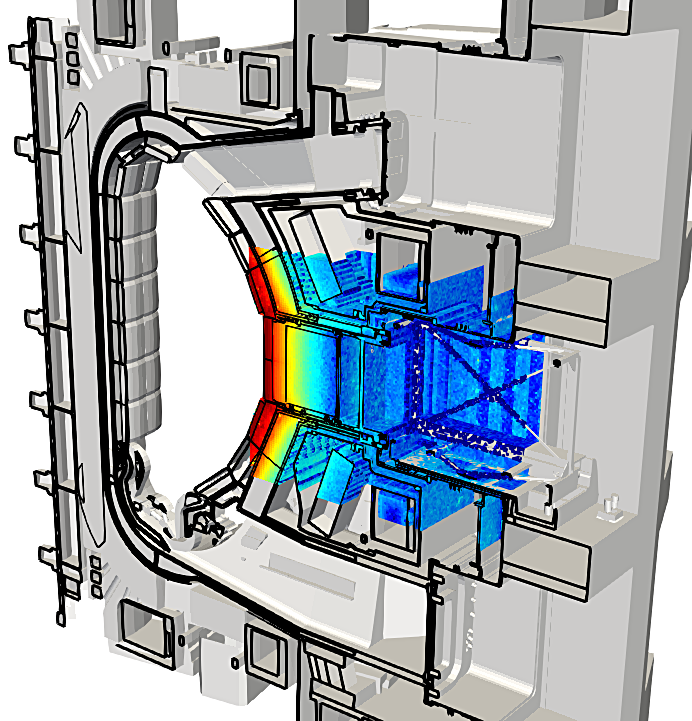D1S-UNED
Materials get activated (become radioactive) in facilities involving the presence of neutron fields. This represents a radioactive inventory that emits decay photons. Depending on the location inside the facility, the decay photons field might be challenging to the survivability of the electronics, or to the human intervention. It has a strong impact on the plant safety and economics. Thus, the understanding of the decay photon field to minimize it and mitigate its effect is key to ensure the viability of those facilities.
However, the accurate determination of the decay photon fields is one of the most complex activities in the field of the nuclear analysis nowadays. It involves sophisticated algorithms, the coupling of computational codes and the use of High-Performance Computing (HPC) infrastructures.
In this context, TECFIR / UNED developed in 2015 the tool called D1S-UNED. It is an implementation of the Direct-one Step method in the codes MCNP5/6, with supporting scripts to create D1S-specific nuclear data irradiation scenarios. It integrates the neutron and decay photon transport in the same calculation, what saves millions of activation calculations and allows a continuous-wise treatment of the spatial resolution. D1S-UNED is one of the most advanced implementations of the D1S method, enabling unequal features in terms of analysis capabilities and code performance.
D1S-UNED has been verified computationally and validated experimentally for ITER applications. For more information about R2S-UNED, see the following paper:
- P. Sauvan, R. Juarez, G. Pedroche, J. Alguacil, J.P. Catalan, F. Ogando, J. Sanz, âD1SUNED system for the determination of decay photon related quantitiesâ, Fusion Engineering and Design 151 (2020) 111399
